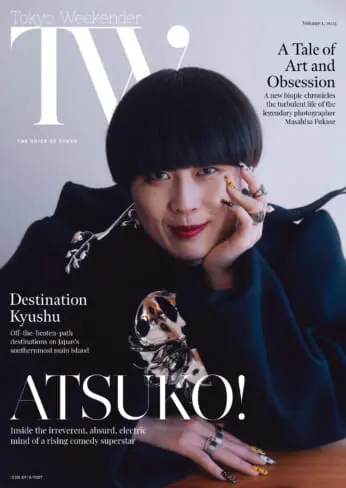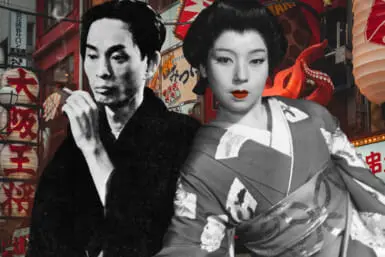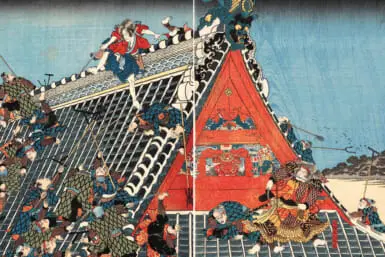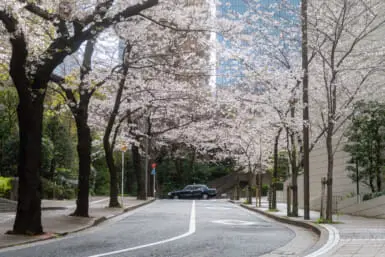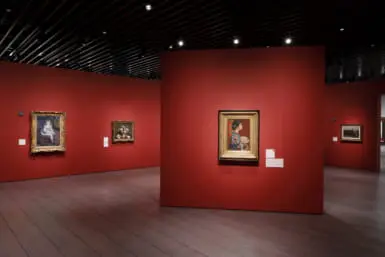For collectors and art lovers who appreciate the beauty of Japanese craftsmanship, the upcoming exhibition at Nihombashi Takashimaya Department Store is a must-visit event. It’s a chance to view — and buy — masterpieces from some of Japan’s most famous stores.
On display from February 19 to 24, the 76th exhibition of “Master Craftsmen and Long-Established Shops in Eastern and Western Japan” will highlight long-established heritage brands from Ginza Murasaki Association and Kyoto Kurenai Association. These timeless accessories and ornaments embody a refined artistic sensibility honed over generations.
The exhibition maintains a loyal following and a fascinating history; it’s especially appealing because the products on display can actually be purchased on-site. Its origins trace back to 1950, when the Association of Master Craftsmen from East and West was founded at Higashihongan-ji Temple in Kyoto. At a time when public showcases of fine crafts were rare, the association aimed to introduce the elegance of traditional crafts to a wider audience. Nihombashi Takashimaya was chosen as its central hub for the Kanto region, with Osaka Takashimaya serving as its Kansai counterpart.

The historic Nihombashi Takashimaya Department Store building is an architectural gem to admire in itself, constructed during the early Showa period in 1933. Capturing the era’s zeitgeist by fusing Japanese and Western styles, it was the first department store building to be designated an Important Cultural Property in 2009.
Ginza Craft Stores: From Edo Artistry to Modern Classics
Ginza, Tokyo’s famed upscale shopping district, will represent East Japan in the exhibition. Known since the Edo period for its skilled craftsmen and artisans, Ginza was reborn in the Meiji period following a devastating fire in 1872. Rebuilt with help from Irish civil engineer Thomas Waters, who took inspiration from European city centers, it came to symbolize Tokyo’s urban modernization.

Yamatoya
One of the key participants from the Ginza Murasaki Association is Yamatoya, a historic handbag store established in 1912. At the time, many Japanese people wore kimono and carried their belongings in furoshiki wrapping cloths; Yamatoya’s innovative, made-to-order handbags with handles offered a fashionable way for individuals to express themselves. Yamatoya’s top-handle Boston handbag — adapted from European models — is an iconic style in the Japanese fashion industry. These bags with zippers were a revolutionary departure from furoshiki or drawstring-type bags. Today, the brand continues their tradition of designing classic silhouettes to last for a lifetime.

Yoshinoya
Another highlight is Ginza Yoshinoya, a heritage shoe brand committed to crafting comfortable and high-quality shoes for over a century. With collections tailored to a variety of foot shapes, ages and lifestyles, Yoshinoya has stood by their philosophy of “comfort is beauty.” At the exhibition, their slip-on women’s loafers — designed for both style and durability — will be on display, showcasing their dedication to Japanese hospitality and craftsmanship.

Tosai
Tosai is a Kyoto ware specialty store with a long history in Ginza. The Ginza store opened in 1936, following the first location in Kiyomizu, Kyoto. Known for its pottery and porcelain with hand-painted original designs, Tosai creates elegant traditional tea ceremony utensils, tableware, sake drinkware and more. While their products span many categories, they are united by Tosai’s design philosophy: depicting the chic charms of Tokyo and inheriting the grace of Kyoto.

Kyoto Craft Stores: The Birthplace of Japanese Craftsmanship
Representing West Japan in the exhibition is Kyoto, the ancient capital and cradle of Japanese traditional crafts. As the seat of the Imperial Court, Kyoto championed artisans who greatly influenced the inception and development of Japanese crafts to this day. Some of these cultural heirlooms include Kyoto pottery (Kyo-yaki), kimono, lacquerware and folding fans (Kyo-sensu).

Miyawaki Baisenan
Founded in 1823, Miyawaki Baisenan is one of Kyoto’s most esteemed folding fan specialty stores. Tomioka Tessai — the last literati painter of the late Edo period — named the store after a precious Kyoto tree, Baisenzakura. Fan-making flourished as one of Kyoto’s three main crafts at the time, beloved not only by nobility but also ordinary people. In modern day Japan, fans signify transition and decorate special occasions; they appear in children’s Shichi-go-san ceremonies, weddings and traditional theater. Embodying the invaluable history of hand-painted fans, Miyawaki Baisenan stays true to the notion that “a fan passes through the hands of craftsmen 87 times” to reach its full splendor.

Itochu
Itochu is a long-established Kyoto footwear brand that has been dedicated to the aesthetics of footwear for over 130 years. Its products are highly regarded for their sense of refinement and their exceptional comfort.
Itochu’s approach to creating traditional Japanese attire is motivated by a distinctive pursuit of beauty; the company incorporates various traditional techniques nurtured in the ancient capital city of Kyoto, including dyeing, weaving and embroidery. Using these techniques, it creates an array of innovative and unique zori sandals and bags.

Nishikawa
A cornerstone of Japanese bamboo craftsmanship since 1831, Nishikawa specializes in Kyoto sudare, a type of traditional screen or blinds. It helped to elevate bamboo crafts from functional use to an art form through its incorporation into tea ceremonies and flower arrangements.
The second-generation owner devised ozashiki sudare (parlor blinds), enabling this celebrated decorative feature — which had previously adorned the homes of nobility and samurai households — to become widely accessible to the general public. Some of Nishikawa’s meticulously crafted items include woven basket bags, hanakago (a flower basket used in ikebana and sometimes also used in Japanese tea ceremony), lighting fixtures and dining accessories.
Enjoy Sweets and Beverages
After browsing, treat yourself to a delightful break at Suetomi AoQ Cafe Stand or Sarutahiko Coffee, both of which are holding pop-ups within the exhibition. Suetomi AoQ Cafe Stand is an offshoot of the storied Kyoto confectionery brand established in 1893; it’s the first shop of this brand to open in the Kanto region.
Indulge in their signature financier cake and anko (red bean) salt bread, perfect for recharging after a long day of shopping. For coffee enthusiasts, Sarutahiko offers a taste of Tokyo’s vibrant café culture. Founded in Ebisu, Tokyo, Sarutahiko is celebrated for its expertly crafted seasonal lattes and single-origin pour-over brews.
The 76th exhibition of “Master Craftsmen and Long-Established Shops in Eastern and Western Japan” will be held on Nihombashi Takashimaya’s 8th floor from February 19 to 24. From February 19 to 24, it will be open from 10:30 a.m. to 7:30 p.m.; on February 24, it will close at 6:00 p.m.
For more information, please visit their website or Instagram page.
